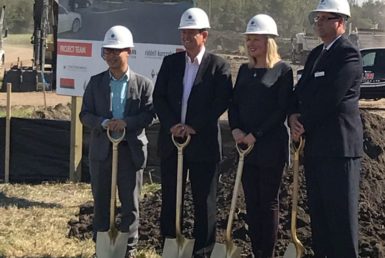Survey results from a new DBA survey show billions of dollars in investment into Edmonton’s downtown are changing public perceptions.
Billions of dollars spent downtown changing perceptions, survey suggests

Billions of dollars spent downtown changing perceptions, survey suggests
A new Downtown Business Association survey suggests billions of dollars invested in Edmonton’s downtown are changing public perceptions of the area while highlighting challenges ahead as the city looks to double the number of people living in the core.
“We’ve been doing a lot of work and putting a lot of money and time and significant investment into making downtown a more inclusive and inviting place, and we’re seeing that pay off,” said Ian O’Donnell, executive director of the Downtown Business Association (DBA), speaking at the Matrix Hotel at 10640 100 Ave. on Wednesday.
The report, Mapping Growth: A Comparative Look at Downtown’s Transformation, compared survey results from 2010 to new results from an online survey conducted in June and July with nearly 1,500 respondents.
Both those living inside the downtown core and suburban respondents reported feeling safer downtown in 2017 than in 2010, with 89 per cent of those saying they feel safe in Edmonton’s downtown during the day and 57 per cent saying they felt safe in the core at night.
Nupur Thakor, who authored the report, said all of the eight crime indicators used by the Edmonton Police Service overall have dropped six per cent downtown since the opening of Rogers Place in September.
While some of this can be attributed to increased police presence downtown — saying the number of officers patrolling downtown has increased from less than two dozen 20 years ago to nearly 70 officers today — Thakor said increased foot traffic is making downtown streets feel safer.
“There is more visibility of people and more vibrancy, and when there are more eyes on the street, you are more likely to feel safer,” Thakor said.
When asked to choose issues that harm the perception of personal safety downtown, more than half said homelessness was an ongoing issue, 36 per cent complained of intoxicated people, 35 per cent identified panhandlers and 29 per cent cited drug abuse as ongoing concerns.
Significant investments in the downtown core, with an estimated $7 billion in investment projected between 2012 and 2022, has driven demand from developers and citizens alike, said O’Donnell.
“We’re seeing downtown becoming more attractive to investors, we are seeing a shift to more people wanting to live and work downtown, we’re certainly seeing lifestyle being a significant impact as to why people choose downtown. More people want to work, walk to services, be closer to friends and family,” O’Donnell said.
Even as 1,800 new residential units are under construction and between 6,000 and 7,000 new units are planned for Edmonton’s downtown core as the city looks to double the number of people living downtown from the approximately 13,000 people currently residing there, Thakor said there are challenges ahead in improving liveability.
“There needs to be an equal growth of shopping and services,” Thakor said.
Issues such as access to amenities including grocery stores — with the survey showing a three-way split between those who would, would not and would maybe recommend downtown Edmonton for shopping — and a lack of diversity in housing options, such as limited availability of three-bedroom units, were highlighted in the report.
Coun. Scott McKeen, who represents Edmonton’s downtown Ward 6, said this focus on creating a residential downtown core could make Edmonton unique and keep downtown streets bustling at all hours, avoiding the early evening exodus experienced in cities where most people come downtown for work.
“Our towers are going to be full of people, and what that means is after five o’clock at night, they’re here. It’s not like you roll the sidewalks up because everyone leaves at 5:30 p.m.,” McKeen said.
McKeen said the billions in projected investment and the increase in those looking to work and live downtown serves as proof the city’s investment in Rogers Place is having its desired effect.




Join The Discussion